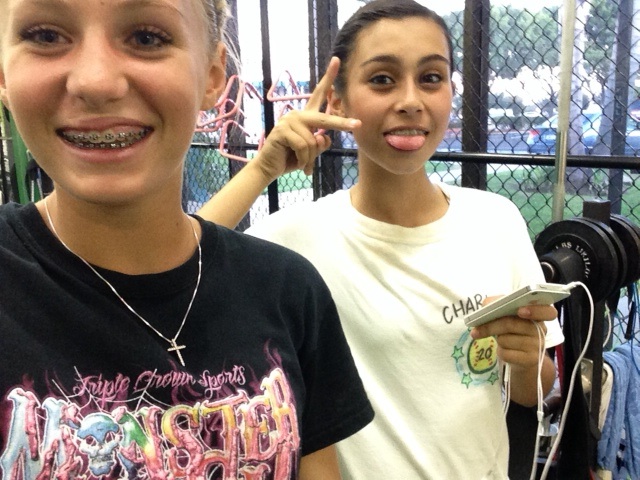Evaluating an athlete is much more than just testing their vertical and pro-agility. At 1RM Performance, we have a very detailed way of evaluating our athletes. In 1 hour, we can figure out if an athlete has imbalances, mobility issues, strength issues, power issues or speed issues. Is it the best way of judging an athletes's abilities? I can't say 100% yes, but we have figured out a pretty sweet way to take our athletes to the next level and have concrete numbers to show their gains.
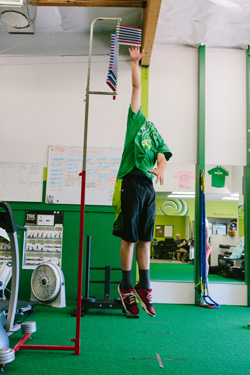
Movement Screen
Bobby and I both start an eval with a type of Movement Screen. We use the same eval form on all our athletes, but if you take a look at my notes compared to his, they are drastically different. For example, we both use the Functional Movement Screen as part of our evaluation process. I know I could get a lot of flack for this, but I really only use a few of the FMS tests, and then I add in some others (like ankle mobility and single leg squat). I focus mainly on the Overhead Squat, Inline Lunge, Active Straight leg raise, Shoulder Mobility and Trunk Stability Pushup. From those 5 tests, I can learn a ton about how an athlete moves and what kind of issues they might have. I incorporate a Joint by Joint approach where I look at each joint and see if each stable joint is really stable and each mobile joint is really mobile (this is kind of a Mike Boyle concept). Bobby tends to do the entire FMS in a little more detail then I would do. Does that make one of us right? No way. It just shows that we learn about athletes in different ways. We have both figured out things that work for us. A fellow strength coach uses the Titleist Performance Institute's Functional assessment which is also a great tool to asses athetes. This is an example of my scribbles from the FMS with one of my junior high athletes.
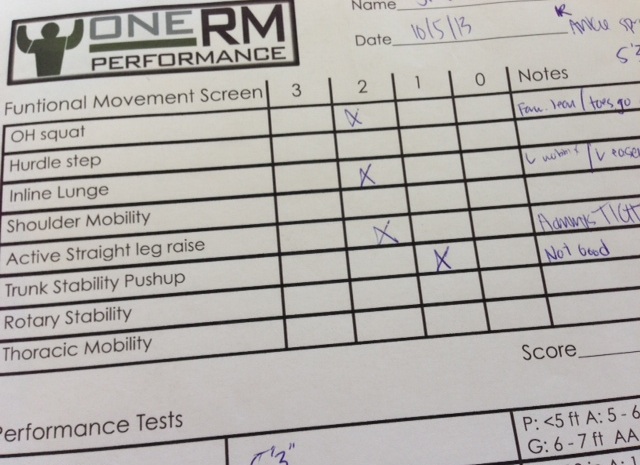
We both work with a lot of overhead athletes (baseball/softball/volleyball/tennis). We see a lot of trends with these athletes and we have developed fairly easy ways of seeing this. I don't care if you like or dislike the FMS, but there's no denying that a trunk stability pushup is a super easy way of testing an athletes core strength and scapular control. An overhead squat is also an easy way to see some imbalances with athletes. If an athlete has excessive forward lean while they are squatting, check their ankle mobility and also their hips to see if they have some mobility issues there. If their knees go in, have them go through some more movements to see if they have valgus collapse there as well. In the picture below, Paul (who's playing in an AVP qualifier right now) has some mobility issues but his squat doesn't look too bad.

Performance Tests
Once again, Bobby and I use the same eval form for our performance tests, but we have our own spin to it. I always test both vertical and horizontal power, and also pro-agility (5-10-5). I work with a lot of softball and volleyball players, so depending on their position, I will also do a kind of modified pro-agility with lateral movement included. Here's some guidelines when testing athletes:
Broad Jump: I test both a double leg broad jump and a single leg continuous broad jump. I have found that you can easily see imbalances between Right and Left legs with a single leg broad jump. It helps me in my assessment of an athlete, as well as helps the athlete see they have some work to do. Specifically what I look for: in a 10 yard distance, I want an athlete to be able to cover 10 yds in 6 or less jumps on 1 leg (6 is good for 8th grade or under, 4 or 5 is ideal for highschool). As far as a double leg broad jump, I look for an athlete to be able to jump atleast their height (minimum). For junior high, 6'0-6'6'' is good for girls, 7+ for guys is good; for high school girls, 7+ is good, 8+ is ideal; for high school boys, 8'6''+ is ideal.
Pro-agility: We both want all of our athletes under 5 seconds ideally on their pro-agility. The fastest junior high/high school athlete I have timed was a 4.41. For our high level high school girls and guys, we want them under 4.5 seconds. The pro-agility is a great test to determine change of direction speed. Ofcourse, athletes will learn to get good at the test, but it's still a great way to test improvements.
Vertical: I test my athletes in both a standing vertical (using a Vertec) and also with an approach, using this little homemade device. If you work with volleyball players, this is a must because college coaches look at their numbers. To give you an idea, Division I schools want their middle hitters to touch 10' with an approach, outside hitters to touch 9'10'', and liberos to have a 28+ inch vertical. If you don't want to spend $600 on a Vertec, then all you need to do is find a scrap piece of wood, some extra paint, some sort of fabric to hang, some nails, and a little craftiness.
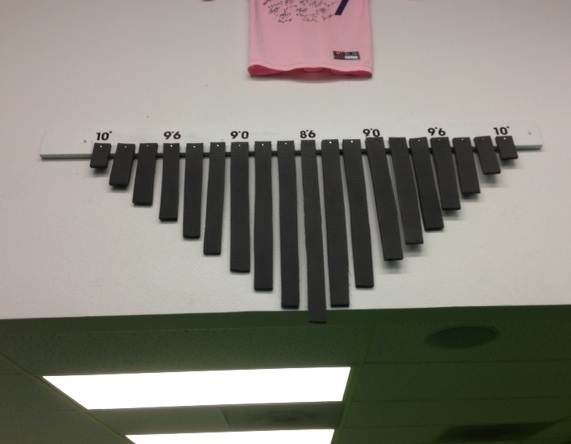
Strength Tests
I do most of my more traditional strength tests at the end of my evaluation. It really varies from athlete to athlete which ones I will incorporate. Sometimes, I will work with an athlete who has shaky legs after the first 10 minutes of the workout. If that's the case, then I probably won't be able to include too many strength exercises at the end. With that being said, I almost always test athletes in an Inverted row, Nose-touch pushup, and Plank.
Nose touch pushup: 5+ for Junior high girls, 10+ for High school girls; 10+ for Junior high/ high school boys - (the high school boys we see have quite a bit of dysfunction, so they actually aren't much more advanced then junior high boys)
Inverted row: 5-10 for junior high girls, 10+ for high school girls; 10+ for Junior high/high school boys - (same is true here, High school boys who play overhead sports are pretty dysfunctional)
Ofcourse I look at how many quality reps an athlete can do on each test, but I'm more concerned about the ability to maintain body positioning. For example, I have tested athletes who can hold a plank for a solid minute+, but this is what their scapula look like:
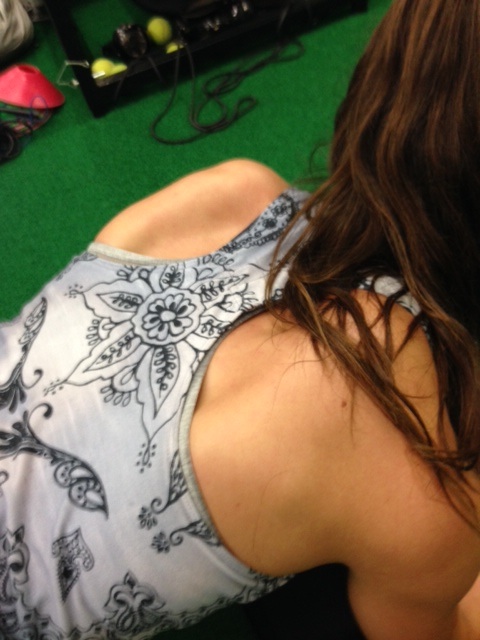
That's a major indicator that this athlete needs some scapula work. Depending on what I see during an athletes' warmup and FMS, I will include other tests to help me figure out what's going on. I have a lot of athletes do a single leg squat to get a better idea of their valgus collapse and if it's worse on one side or the other. If an athlete has an anterior pelvic tilt or poor anterior core strength, as evidenced by their rib cage flaring up, I might have them do a set of kneeling Y's to see if they can actually maintain a neutral pelvis, and keep their ribs "pulled down".
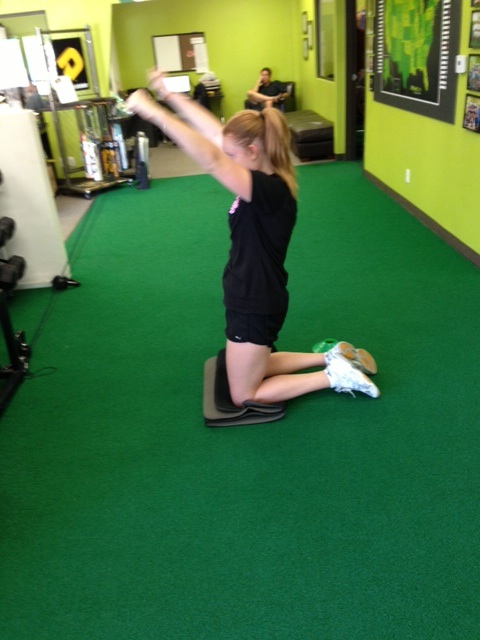
The important thing with an evaluation is that you figure out the athletes strengths and weaknesses. It doesn't matter if you use the FMS, the TPI assessment, the Joint by Joint approach, or any combination of evaluations. Our methods are always changing and we are probably going to add in a few of the TPI assessments into our eval process. Now it's time to help athletes move better and get stronger... Peace out from some 1RM athletes (below).
